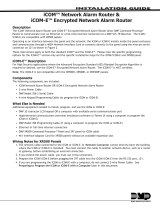
iCOM
Controls Training and Service Manual
and will be supplied with an electrical cylinder unloader valve. The electrical
solenoid valve used to unload or reduce the cooling capacity of the compressor.
The compressors will operate in an on/ off - loaded/ unloaded configuration
method to cool the space. The hot gas bypass solenoid valve option is not
available on 4 stage systems.
The temperature controller activates the first cooling stage, lead compressor
unloaded, when the return air temperature increases to 25% of the cooling
proportional band. The second cooling stage, lag compressor unloaded, is
activated when the return air temperature increases to 50% of the cooling
proportional band.
The temperature controller activates the third cooling stage, the lead compressor
loaded, when the return air temperature increases to 75% of the cooling
proportional band. The fourth cooling stage, the lag compressor loaded, is
activated when the return air temperature increases to 100% of the cooling
proportional band.
The temperature controller deactivates the fourth cooling stage, lag compressor
loaded, when the return air temperature decreases to 75% of the cooling
proportional control band value. The third cooling stage, lead compressor loaded,
is deactivated when the return air temperature decreases to 50% of the cooling
proportional control band value.
The temperature controller deactivates the second cooling stage, lag compressor
unloaded, when the return air temperature decreases to 25% of the cooling
proportional control band value. The first cooling stage, lead compressor
unloaded, is deactivated when the return air temperature decreases to the
temperature set point value or 0% of the cooling proportional control band value.
The table below shows the devices activated by each of the four cooling stages.
STAGE COMPRESSORS, UNLOADER STATE
1
Compressor 1 On, Unloader On (Energized)
Compressor 2 Off, Unloader Off (De-Energized)
2
Compressor 1 On, Unloader On (Energized)
Compressor 2 Off, Unloader On (Energized)
3
Compressor 1 On, Unloader Off (De-Energized)
Compressor 2 On, Unloader On (Energized)
4
Compressor 1 On, Unloader Off (De-Energized)
Compressor 2 On, Unloader Off (De-Energized)
14




















